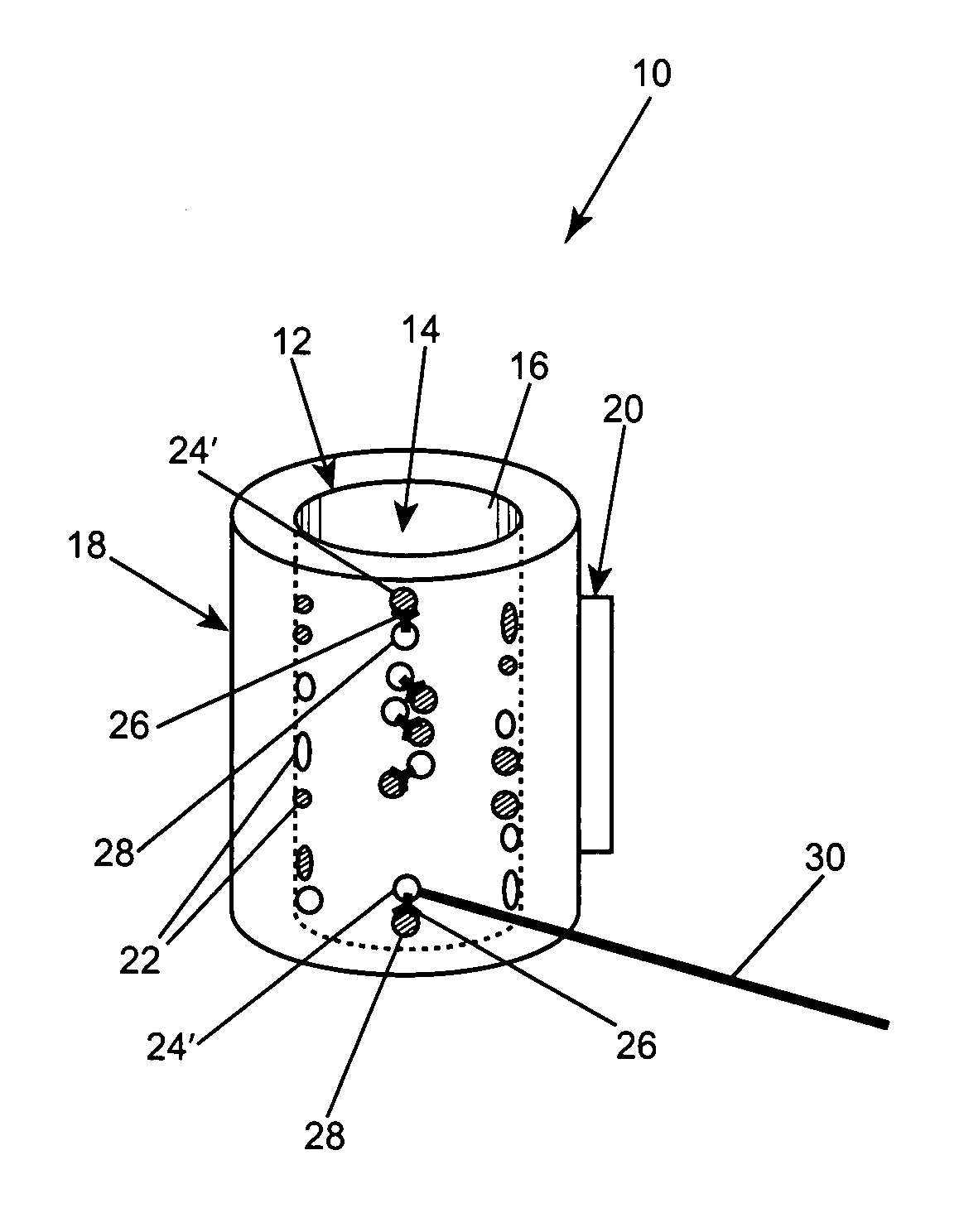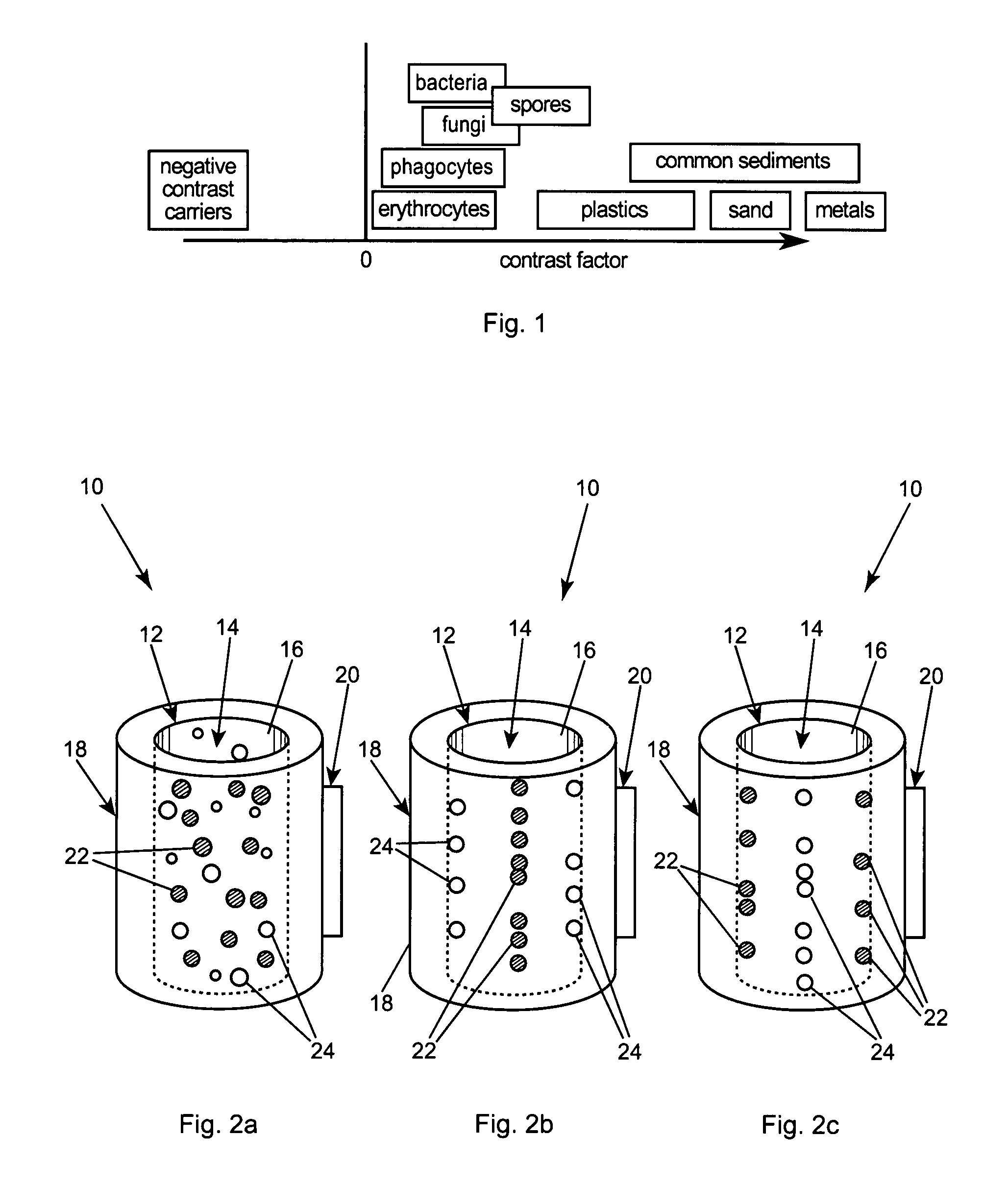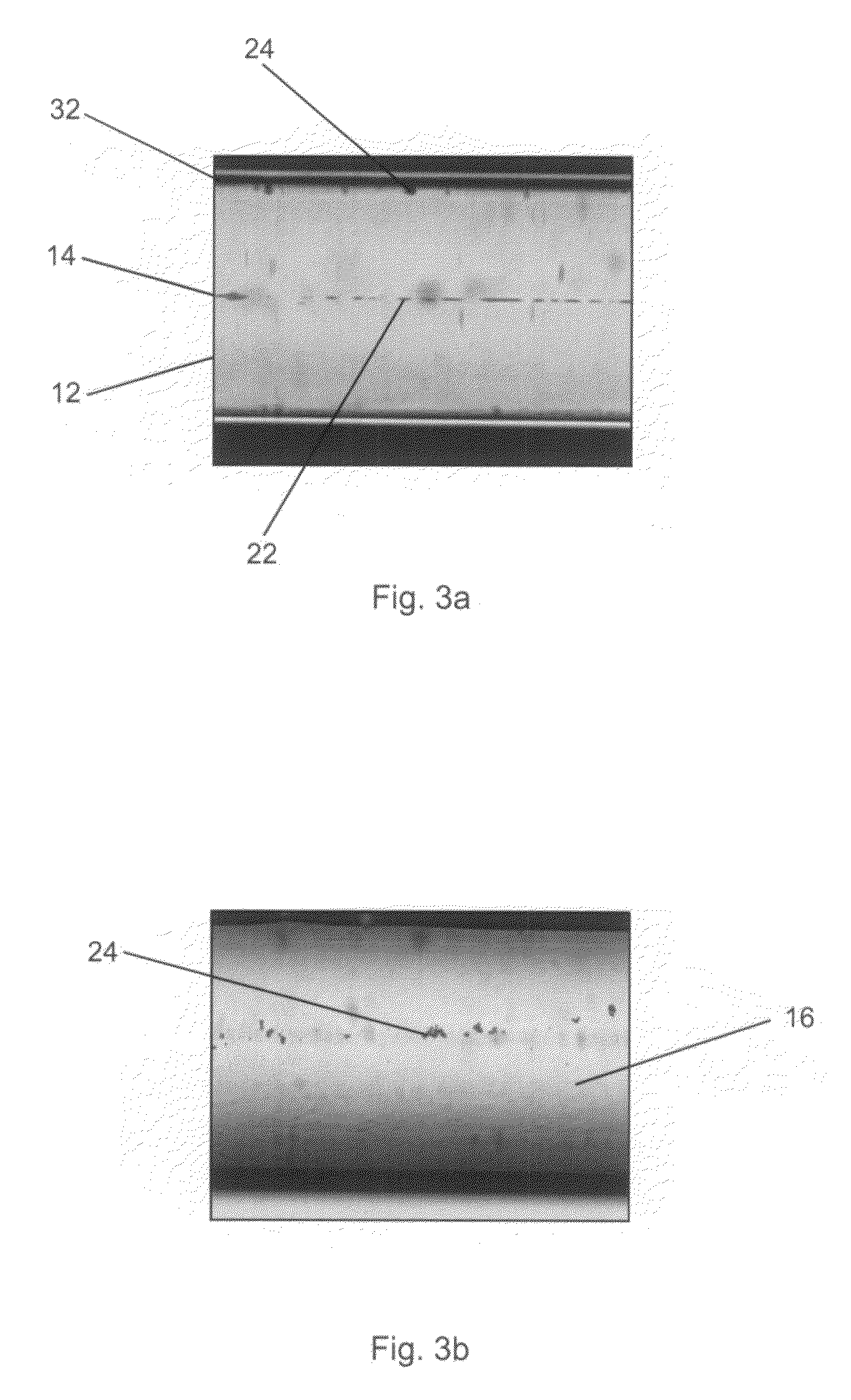Apparatus for separating particles utilizing engineered acoustic contrast capture particles
a technology of contrast capture and apparatus, which is applied in the field of field-based particle separation, can solve the problems that separation utilizing acoustic radiation pressure has not been readily implemented in biological problems
- Summary
- Abstract
- Description
- Claims
- Application Information
AI Technical Summary
Benefits of technology
Problems solved by technology
Method used
Image
Examples
Embodiment Construction
[0018]The acoustic radiation pressure force on a compressible, spherical particle of volume V in an arbitrary acoustic field can be written in terms of an acoustic radiation pressure force potential U:
[0019]U=43πa3[(βo〈p2〉2)f1-32(ρo〈v2〉2)f2]
[0020]Here, a is the particle radius, β0 is the compressibility of the surrounding fluid, and ρ0 is the density of the surrounding fluid. The pressure and velocity of the acoustic field in the absence of the particle are described by p and v, respectively, and the brackets correspond to a time-averaged quantity. The terms f1 and f2 are the contrast terms that determine how the mechanical properties of the particle differ from the background medium. They are given by:
[0021]f1=1-βpβof2=2(ρp-ρo)(2ρp-ρo)
The subscript p corresponds to intrinsic properties of the particle. The force F acting on a particle is related to the gradient of the force potential by:
F=−∇U
Particles will be localized at positions where the potential U displays a minima...
PUM
| Property | Measurement | Unit |
|---|---|---|
| force potential | aaaaa | aaaaa |
| density/compressibility ratio | aaaaa | aaaaa |
| density/compressibility | aaaaa | aaaaa |
Abstract
Description
Claims
Application Information
 Login to View More
Login to View More - R&D
- Intellectual Property
- Life Sciences
- Materials
- Tech Scout
- Unparalleled Data Quality
- Higher Quality Content
- 60% Fewer Hallucinations
Browse by: Latest US Patents, China's latest patents, Technical Efficacy Thesaurus, Application Domain, Technology Topic, Popular Technical Reports.
© 2025 PatSnap. All rights reserved.Legal|Privacy policy|Modern Slavery Act Transparency Statement|Sitemap|About US| Contact US: help@patsnap.com



